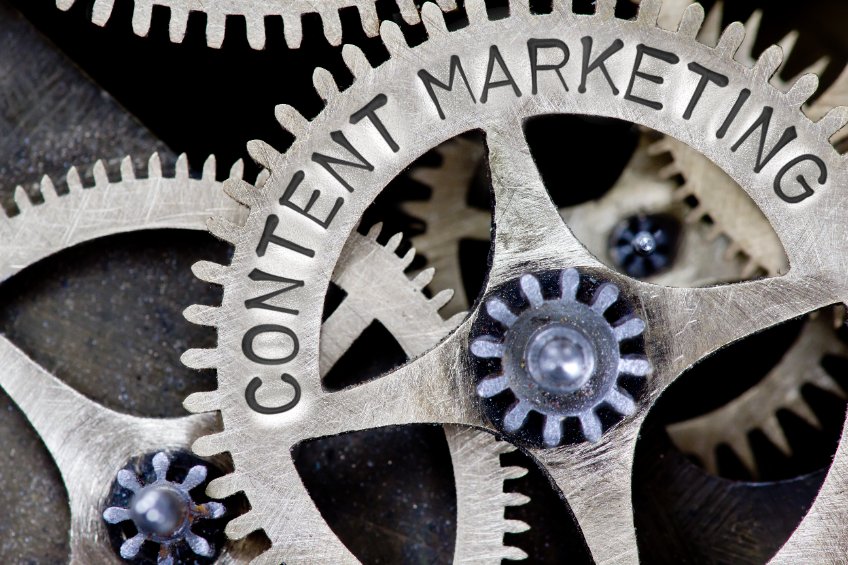
According to the State of Content Marketing 2022 Global Report by Semrush, 97 percent of respondents agree content marketing is an important part of their overall marketing strategy. But creating consistent and compelling content that connects meaningfully with target audiences is no easy task. It takes specific expertise, a clear vision, ongoing commitment and, most importantly, time. When integrated successfully, content marketing automation technology helps marketers streamline repetitive tasks and generate more and better leads. It also helps nurture existing leads and distribute personalized messaging across multiple channels. As a result, organizations can increase efficiency, collect better data and grow revenue faster.
Content Marketing Automation Tools

When incorporating new technology into your marketing tactics, consider using automation tools to facilitate these five areas of content marketing:
1. Content distribution is an essential step to ensuring your thought leadership gets delivered to the right audiences. It also can be one of the most time-consuming. It’s a mistake to think readers will find their own way to your messages. Post your content to its native location on your website or in a digital publication. Then use content distribution to extend the reach of blogs, articles, white papers, eBooks, videos or podcasts. Additional channels include social media, digital newsletters, RSS feeds and content discovery platforms like Scoop.it or Medium. Popular automated solutions for content distribution include Hootsuite and Sprout Social, which primarily specialize in social media. Constant Contact and MailChimp are good for automated email campaigns. Use Content Studio and Hubspot for all-encompassing solutions.
2. Personalization is another time-consuming task that marketers should not skip. Automating personalization gives marketers an edge over those organizations that still manually select and share content with individual audience segments. The process can be as simple as showcasing an individual’s or company’s name in an email or can include more complex tasks such as building lists for targeted campaigns or sharing a specific piece of content at the corresponding stage of a prospect’s buyer journey.
“The platform should respond to triggers you’ve built in,” says Beth Arritt of Higher Logic. “Not only are you automating, you’re sending different, more personalized messages to members based on what they’ve already clicked in a campaign.” Typically, automated personalization tools are integrated into platforms built for specific marketing tactics (email, social media posts, etc.). A clear understanding of your target market, channels and campaign goals must be in place before tackling how personalization best fits in.
3. Content curation is the process of carefully selecting, sharing and commenting on the content of other respected sources. Source this content from other companies, thought leaders, researchers, industry organizations and respected media outlets. It then is used within your own content “collections” to showcase ideas, news, trends, alternative theories and thought leadership your organization supports. Today, content curation occurs most often via social media. It also has its place in email outreach, newsletters, blogs, articles and sales efforts. Curata and CurationSoft are examples of software built specifically to streamline content curation.
4. Content creation and editing are two of the most important skillsets of content marketers. The most compelling information and industry expertise are just part of what’s required. Marketers need strong and engaging writing skills to communicate their ideas effectively. While AI-written copy cannot replicate the power of human creativity, leveraging the right tools at repetitive or time-consuming stages of the writing and editing process can offer content marketers more time to focus on crafting compelling content.
Most of us have probably seen, if not used, the autofill options prompted in word processors such as Microsoft Word and Apple Pages, search engines and email programs. This is a type of content automation. AI and machine learning tools such as Copy.ai can help prompt new ideas, start outlines and collate early research. Automated editing tools can make editing easy across any platform with options such as Grammarly or Hemingway apps. Managerial tools such as DivvyHQ streamline activities like idea aggregation, editorial scheduling and workflow management.
5. Analysis of content past and present is vital to making informed campaign decisions that deliver on budget and engagement. Automated data collection is a game changer for businesses to understand their customers’ and prospects’ habits, interests, needs and activities. “Until recently, interpreting all that data and turning it into actionable intelligence required hiring a data analyst,” says digital marketing consultant Tom Pick. “These uniquely skilled individuals are hard to find and command hefty salaries. But a new crop of tools is bringing intelligent data analysis within reach of any size company and the marketing agencies that serve them. By applying AI to website, email and social media metrics, these tools turn raw data into useful insights and actionable intelligence available to almost anyone.”
Enterprise-level marketing automation tools such as Click360 or Marketo have analytics integrated into their campaign management. Specific programs such as Google Analytics or Clickvoyant help marketers create custom reports or automatically send updates on specific data queries. Remember that automated analytics are only effective when decision-makers wield data to improve the value of content efforts.
More Time to Focus on Innovation

Content marketing automation isn’t about creating cookie-cutter content developed by AI. Nor is it about blasting the same content to every available marketing channel. Instead, it’s the strategic use of automated processes to streamline tasks that take time away from marketers and content developers. Marketing automation technology offers professionals extra time to focus on more challenging or innovative efforts that improve audience engagement, create memorable customer experiences and deliver powerful results.
